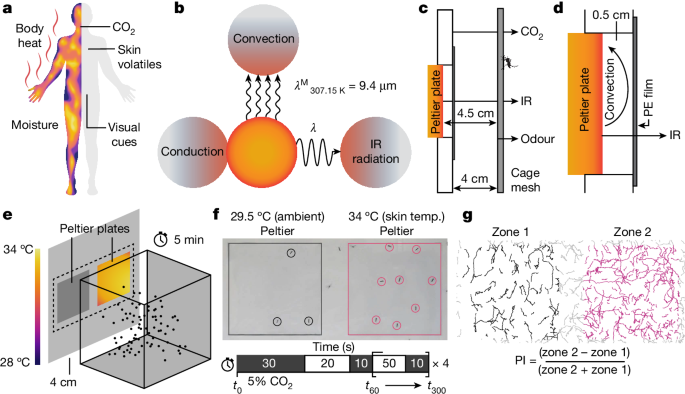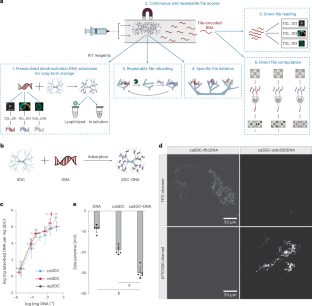2024-08-22 カリフォルニア大学サンタバーバラ校(UCSB)
<関連情報>
- https://news.ucsb.edu/2024/021587/mosquitoes-sense-infrared-body-heat-help-track-humans-down
- https://www.nature.com/articles/s41586-024-07848-5
- https://www.science.org/doi/10.1126/science.1198904
熱赤外線はアカイエカの宿主探索行動を誘導する Thermal infrared directs host-seeking behaviour in Aedes aegypti mosquitoes
Avinash Chandel,Nicolas A. DeBeaubien,Anindya Ganguly,Geoff T. Meyerhof,Andreas A. Krumholz,Jiangqu Liu,Vincent L. Salgado & Craig Montell
Nature Published:21 August 2024
DOI:https://doi.org/10.1038/s41586-024-07848-5

Abstract
Mosquito-borne diseases affect hundreds of millions of people annually and disproportionately impact the developing world1,2. One mosquito species, Aedes aegypti, is a primary vector of viruses that cause dengue, yellow fever and Zika. The attraction of Ae. aegypti female mosquitos to humans requires integrating multiple cues, including CO2 from breath, organic odours from skin and visual cues, all sensed at mid and long ranges, and other cues sensed at very close range3,4,5,6. Here we identify a cue that Ae. aegypti use as part of their sensory arsenal to find humans. We demonstrate that Ae. aegypti sense the infrared (IR) radiation emanating from their targets and use this information in combination with other cues for highly effective mid-range navigation. Detection of thermal IR requires the heat-activated channel TRPA1, which is expressed in neurons at the tip of the antenna. Two opsins are co-expressed with TRPA1 in these neurons and promote the detection of lower IR intensities. We propose that radiant energy causes local heating at the end of the antenna, thereby activating temperature-sensitive receptors in thermosensory neurons. The realization that thermal IR radiation is an outstanding mid-range directional cue expands our understanding as to how mosquitoes are exquisitely effective in locating hosts.
ショウジョウバエの温度識別におけるロドプシンの機能 Function of Rhodopsin in Temperature Discrimination in Drosophila
Wei L. Shen, Young Kwon, Abidemi A. Adegbola, Junjie Luo, […], and Craig Montell
Science Published:11 Mar 2011
DOI:https://doi.org/10.1126/science.1198904
Abstract
Many animals, including the fruit fly, are sensitive to small differences in ambient temperature. The ability of Drosophila larvae to choose their ideal temperature (18°C) over other comfortable temperatures (19° to 24°C) depends on a thermosensory signaling pathway that includes a heterotrimeric guanine nucleotide–binding protein (G protein), a phospholipase C, and the transient receptor potential TRPA1 channel. We report that mutation of the gene (ninaE) encoding a classical G protein–coupled receptor (GPCR), Drosophila rhodopsin, eliminates thermotactic discrimination in the comfortable temperature range. This role for rhodopsin in thermotaxis toward 18°C was light-independent. Introduction of mouse melanopsin restored normal thermotactic behavior in ninaE mutant larvae. We propose that rhodopsins represent a class of evolutionarily conserved GPCRs that are required for initiating thermosensory signaling cascades.

